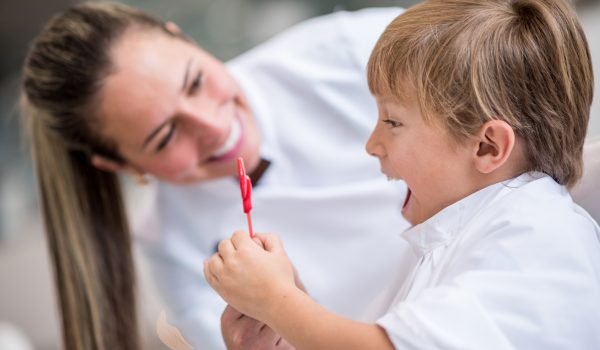
In the bustling tapestry of family life, maintaining a positive and supportive environment is paramount for the well-being and development of every member. Positive Behaviour Support (PBS) offers a comprehensive approach to fostering desirable behaviours and nurturing a harmonious atmosphere within the home. In this blog post, we will delve into practical tips for implementing PBS at home, creating a space where positivity can thrive.
Understanding the Basics of Positive Behaviour Support
Before diving into the practical tips, let’s briefly revisit the core principles of Positive Behaviour Support. PBS is a research-based approach that focuses on promoting positive behaviours rather than simply reacting to negative ones. It emphasizes proactive strategies, teaching individuals new skills and reinforcing positive actions, contributing to a more constructive and supportive environment.
1. Establish Clear Expectations and Rules
One of the foundational steps in implementing PBS at home is establishing clear expectations and rules. Sit down as a family and collaboratively define the values and behaviours that are important to everyone. Make sure the expectations are age-appropriate and understood by all family members. Having a set of clear rules helps create a consistent and predictable environment, reducing the likelihood of conflicts.
2. Use Positive Language and Communication
Effective communication is key to a positive environment. Pay attention to the language used within the family. Instead of focusing on what not to do, frame instructions in a positive manner. For instance, say “Please use gentle hands” instead of “Don’t hit.” Positive language promotes a sense of encouragement and cooperation, contributing to a more constructive atmosphere.
3. Create a Visual Schedule
Visual schedules are powerful tools, especially for younger children or individuals with developmental differences. A visual schedule outlines the day’s activities in a clear, sequential manner. This helps individuals know what to expect, reducing anxiety and promoting a sense of security. Include both routine activities and any special events to create a visual roadmap for a positive day.
4. Reinforce Positive Behaviours Consistently
Consistent reinforcement is a cornerstone of Positive Behaviour Support. When individuals exhibit positive behaviours, acknowledge and reinforce them immediately. This can be through verbal praise, a high-five, or a small reward system. Consistency is crucial; reinforcing positive behaviours consistently helps individuals understand the expectations and motivates them to continue engaging in desirable actions.
5. Implement a Reward System
Introduce a reward system that aligns with the family’s values and the individual’s preferences. This could be a sticker chart, a token system, or a simple points system. Establish clear criteria for earning rewards and involve the individual in setting achievable goals. The reward system serves as a positive reinforcement tool, encouraging the repetition of desired behaviours.
6. Establish a Relaxation Space
In any home, moments of stress or frustration are inevitable. Designate a relaxation space where individuals can retreat when they need a break. This space could be a cozy corner with cushions and soft lighting or a specific room equipped with calming sensory items. Having a designated relaxation space allows individuals to self-regulate and decompress, fostering emotional well-being.
7. Encourage Independence and Responsibility
Empowering individuals to take on age-appropriate responsibilities cultivates a sense of independence and self-worth. Assign chores or tasks that contribute to the household and praise them for their efforts. This not only teaches valuable life skills but also instils a sense of pride and accomplishment, promoting positive self-esteem.
8. Model Positive Behaviour
Parents and caregivers are powerful role models. Children and individuals look to their family members for cues on how to behave and react to various situations. Be mindful of your own behaviour and reactions, demonstrating the positive behaviours you wish to encourage. Modelling patience, empathy, and effective problem-solving contributes significantly to the overall positive tone of the household.
9. Foster Open Communication and Problem-Solving
Create an environment where open communication is encouraged. Establish regular family meetings to discuss any concerns, successes, or challenges. Use these opportunities to collaboratively problem-solve and make adjustments to the family’s PBS strategies. Involving everyone in the decision-making process fosters a sense of ownership and cooperation.
10. Celebrate Achievements, Big and Small
Celebrate achievements, no matter how small. Whether it’s mastering a new skill, completing a chore independently, or demonstrating improved self-control, take the time to acknowledge and celebrate these accomplishments. This positive reinforcement encourages individuals to continue their efforts and reinforces the idea that their actions have a meaningful impact.
Conclusion
In conclusion, creating a positive environment through the implementation of Positive Behaviour Support at home is a dynamic and ongoing process. By establishing clear expectations, using positive language, implementing visual tools, and consistently reinforcing positive behaviours, families can foster an atmosphere of cooperation, understanding, and mutual respect. Through these practical tips, we can cultivate a home environment that nurtures the well-being and development of every family member, laying the foundation for a positive and fulfilling family life.

Transform Life is a NDIS registered organisation that provides support for your autistic child, as well as support to you as a parent to best navigate the challenges your child and family face on a daily basis.
Book your consult with an experienced Therapist at Transform Life to explore how OT can support you and your family.







